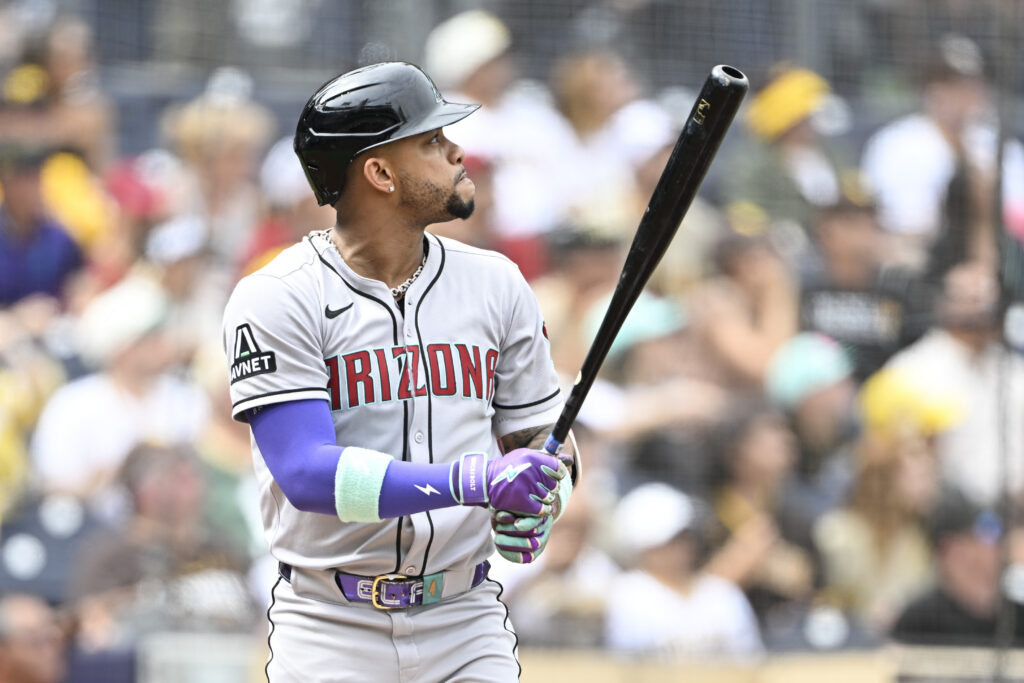How do scouting and analytics relate? The state of the game of baseball as we know it is evolving and has been doing so for quite some time. Throughout the entirety of the existence of professional baseball, statistics have been used, but they started out very simple. Now, thanks to the work of many dedicated baseball minds, we have more analytical tools at our disposal for the evaluation of teams and players than ever before. Half a century ago, no one would have dreamed of the current sophistication.
The Future of Scouting and Analytics
In 2003, Michael Lewis published Moneyball, thus giving a picture of the unique use of numbers and analytics by the Oakland Athletics. Clearly, they were pioneers both in the way they built their roster and in their approach to the draft. They looked for areas in which they could gain a competitive advantage with the use of new information and looked at the specific needs in every area of their roster.
Moneyball did not get through without criticism. Some have suggested that it doesn’t accurately account for all of the factors that were involved. And it should never be used as a means of excusing teams that don’t spend big bucks on free agents, or not crediting teams that do, such as the current New York Mets. After all, it’s not like the A’s won a championship doing what they did. In short, analytical adeptness, however promising it might seem to be, does not dismiss the importance of free agency aggressiveness and the acquisition of superstar talent.
Still, the analytical basis for A’s GM Billy Beane’s handling of the team’s procedures is intriguing. Baseball is changing and moving into the analytical age. This trend is not limited to the study of pure numbers and percentages; it also comes through in the technology that teams are using for biomechanical analysis.
Of course, the A’s weren’t the origin of sabermetric thinking. They are just a well-known, well-respected example of a team that put it to use.
In most areas of life, whether it’s nations going to war or businesses competing, the most advanced are the ones that win out. This can be expected in sports as well. Thus, MLB teams must cultivate a strong analytics staff and incorporate sabermetric thinking into their organizational decisions and philosophies. The reason is simple: a number of potential competitive advantages are lying there, waiting to be discovered and put to use.
But there is an interesting twist. In Moneyball, Lewis describes how Billy Beane broke with the traditional scouts on the team’s draft priorities. He clearly had a low opinion of their capability in player evaluation, and entirely changed the method of scouting to adapt to the analytical findings of his primary sidekick, Paul DePodesta. In fact, Beane went as far as “performance scouting,” but we’ll come back to this. At least in many cases, it seems as though traditional scouting has to take a back seat when analytics take over.
Traditional scouting has a historical precedent of its own. Not only that but it has been well respected for decades. The baseball community should be extremely wary of discarding something that is so well-established as a means to build an organization.
A further complicating factor is that the “old school scouts” sometimes have their own mistrust of sophisticated analytics. When the two are unlikely to reach the same consensus, these scouts will trust their eyes. It is the way they have always done it, and they do not want to give it up. Will scouting and analytics always have to be at odds?
Since the MLB draft is such a critical aspect in considerations like these, it will be a major theme in the remainder of this article. Let’s take a look at some questions that should be asked.
1. Does a Scenario Exist in Which More Could be Inferred from a Player’s Position in the Draft Than is Currently Possible?
According to Mike Rosenbaum, 66% of first-round draft picks end up playing in the major leagues. While in a sense this number does represent the first round as being the ultimate major window of big league talent; the fact that one-third of first-round picks never make it demonstrates a lot about the limitations on what can be predicted. And just reaching the big leagues is not the same thing as having a successful career.
By contrast, there are late-round players that beat out all expectations, working their way to the bigs and thriving. It’s significant that Albert Pujols was actually drafted as late as the 13th round. So while a player’s draft round gives considerable insight into his future potential, this insight is far from perfect.
If scouting techniques can be improved upon by the progressive incorporation of analytics, there should be evidence of this in the form of a distribution of eventual major league talent that is skewed further toward the first few rounds than it is now. Granted, teams sometimes choose to play it less aggressively in the first few rounds to stock up on a greater quantity of solid talent overall. Additionally, there are players whose eventual futures would confound any attempt to predict them. They simply didn’t look good and then turned out, or vice versa. But overall, there should be some evidence of greater predictability.
Technology and numbers could definitely improve a team’s ability to select the right players when the draft comes up. From a league-wide perspective, it might also be a step closer to the ideal reality of all players in the big leagues being the actual ones who deserve to be there. This will never completely be the case. There will always be players who should get a chance and don’t. But it is always possible for improvement to happen.
2. If We Support an Analytical Revolution, What Are We Saying About the “Old School Scouts”?
It shouldn’t be anything disrespectful. It might sound strange to some, but scouting and analytics can go together. It is counterproductive for analysts and sabermetricians to think of themselves as “above traditional scouting.” That is a misunderstanding of the opportunity that we have to progress in our knowledge of the game of baseball, and it does not contribute well toward optimal team building. Plus, an MLB team’s departments need to work together to function properly, and they can’t do this when there’s division and competition within.
Consider the case of a nasty sabermetrician who tells the scouts:
“You guys don’t know a thing about evaluating players. Your profession is outdated, and you can’t hold a candle to what we sabermetricians do. You make sketchy guesses, but we run the numbers and find out what’s really going on. We use our technology and not our eyes. I’m very thankful that I’m not doing garbage like you. One step for man, one giant leap out of the useless world of traditional scouting. All you guys do anyway is show up at the ballpark, and imagine what you think these amateur players are going to do in the future. And if your imagination runs wild, you just go with it. Come on. This is literally Anne of Green Gables logic.”
It should be immediately clear that this is not a guy you would want to have in your front office. While this is an unrealistic, extreme example, it does represent something of what could happen if scouting and analytics are not viewed from a proper perspective.
And the old scouts’ basis for the evaluation of players is completely rational. After all, it is from them that we get the synopsis of the five primary tools of a position player: hitting, power, speed, fielding, and arm strength. Relevant tools are also looked for to identify quality pitchers. Scouting is and always has been a sophisticated art and science.
But it’s poor scouting to go after players because of broad category attributes like athleticism when such characteristics don’t clearly fit into the tools of a baseball player. For instance, I’m not a big fan of scouting high school and college football players with the hope of finding baseball-relevant talent. Scouting should be within the limits of a clear demonstration of the ability to play baseball.
However, this doesn’t mean a scout shouldn’t follow a player that he likes just because no one else does. Longtime Los Angeles Dodgers scout Hank Jones has said that if you like a player, you should put him on your list.
Lastly, scouts that don’t appreciate analytics are being counterproductive.
3. What Other Limitations Can New Information Overcome?
In their book The Art and Science of Pitching, Tom House, Gary Heil, and Steve Johnson state that, “Our eyes can only see, or process, about 32 frames of movement per second. High-speed motion analysis reveals that during the critical phases of a pitcher’s delivery, the extremities can reach speeds of 250 to 700 frames per second.”
Pitching is probably the best example of a game phenomenon that will elude the naked eye in many ways, but there is an application to all areas of the game. The point is that a technological analysis can give insight into specifics that could not otherwise be known.
The new era of baseball will be a breakthrough into the previously unknown. San Francisco Giants reliever John Brebbia has described how raw data and analytics have helped him. This is only one of many examples.
Conclusion
According to a FanGraphs blog, “If we’re talking about a 19-year-old, we gravitate more towards the wisdom of the scouts. If we’re concerned with a 28-year-old with seven pro seasons and five in the major leagues, our answers are perhaps better founded in the performance record.” Unfortunately, while there is some merit to this perspective, it is vastly oversimplified.
So how do scouting and analytics relate? The analytical revolution is a good thing, as long as it doesn’t outdate or nullify the wisdom of traditional scouts. It’s definitely a myth that scouting and analytics cannot coexist.
It’s important to note that if we say that high-level analytics can play a larger role in scouting and drafting players, we are not necessarily implying that Billy Beane’s “performance scouting” is the way to go. Don’t get me wrong. Performance scouting may be great. The point is that there is a difference here, and the incorporation of analytics into the scouting process is not the same thing as performance scouting and a player’s tools can still be paramount in the evaluation. As mentioned before, there may simply be better ways to identify such tools.
The analytical revolution is something to get excited about. Dr. Lynn Lashbrook, the president and founder of Sports Management Worldwide, has made the point that sports are experiencing a revolution. In baseball, that revolution clearly includes a new understanding of numbers. However, it should be remembered that there will always be scouts whose eyes can pick up tremendous major-league talent.
Scouting and analytics go together, and they can even overlap. The type of scouting that has already incorporated tech and analytics is advanced scouting. The average fan doesn’t realize all that goes into a baseball game. It’s critically important for teams to make inferences from the information that they can gather about each other and put that knowledge to strategic use.
And sometimes, it’s just good to have multiple perspectives on the quality of a player or team. Scouting and analytics will both have an impact on baseball’s future. There is no denying this fact.
Check out Troy Brock’s listing of the three most overrated center fielders.
Main Image: Ty Wright-USA Today



